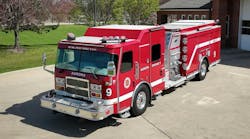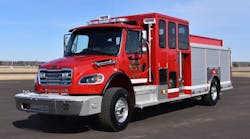This is the 17th in a series of columns on emergency vehicle safety. The columns are a component of VFIS' "Operation Safe Arrival" initiative, aimed at heightening safety awareness and reducing the frequency and severity of incidents involving emergency response vehicles.
Most emergency responders are aware of their state's motor vehicle laws, or at least the section of those codes that address emergency vehicle response. In these codes, the emergency responder is given limited statutory exemptions from traffic law, which can be exercised with reasonable discretion when in emergency response mode. These statutes or codes also identify actions that are to be taken by civilian motorists upon the approach of an emergency vehicle.
Civilian Drivers
Unfortunately, a significant gap exists between what actions the printed text of these codes mandate and how the driving public actually reacts upon approach of an emergency vehicle. A majority of the driving public is years, even decades, removed from when they passed their driver's license exam. Very few recall the exact language of the motor vehicle law that directs them to "Pull to the right side of the road and stop" or something similar (if updated) or "Yield to emergency vehicle upon its approach to an intersection".
For the typical driver, encountering an emergency vehicle with lights and siren activated elicits emotions such as excitement, anxiety and even panic and fear. The reactions of civilian motorists can not be determined and is barely predicted. Our streets and highways are populated with drivers that possess vast differences in driving skills and habits, from elderly to impaired, young to inexperienced, aggressive to raging, and many variations and combinations in between. Even for those motorists that do make a decision and react upon the approach of an emergency vehicle, their options may be limited by any number of circumstances that may not be evident to the approaching emergency vehicle driver.
For all of the above reasons, responders behind the wheel of an emergency vehicle in response mode must assume the mind set that their own passage can not be ensured and certainly not forced. Here are three guidelines to help emergency responders think with the mindset of a civilian driver. In your haste to get to the emergency incident, think about these items as you travel the roads populated with civilian drivers.
- Adjustments
Emergency responders must make adjustments in their responses. They must not rapidly approach slow moving or standing traffic with the intent of intimidation by using size, speed, lights, and siren. This creates a totally unnecessary and dangerous situation. Approach with caution, and do not expend the cushion of safety that an emergency vehicle driver can provide by paying attention to speed control and safe rate of closure.
- Intersection Navigation
Good emergency driver training programs suggest you "make eye contact" when approaching an intersection. However, you should not rely on eye contact alone as an understanding that passage has been granted. Most experienced emergency responders have found that this eye-to-eye or face-to-face contact does not define who will drive in front of whom. Until something definite (such as a hand signal to proceed) is given, no one has safe passage.
- Electronic Traffic Controls
Electronic traffic control devices can and do lull emergency vehicle drivers into a false sense of security. While the device controlling traffic flow changes the light cycles in favor of the direction that the emergency vehicle is traveling, the assumption that the driver has gained safe passage is extremely dangerous. When a civilian motorist waiting for a red traffic light to turn green sees this happen, they are not likely to "recheck" that light before proceeding through it or at least attempting to do so. If, for whatever reason, an emergency vehicle's lights and siren are not evident to someone in this situation, they have no reason to believe that the green light they just saw appear is not valid for their use. No one expects that green light to change back to red in two seconds. In this circumstance, the emergency vehicle driver does not have safe passage.
Summary
There are multiple hazardous conditions that exist on our streets and highways, and many more dangerous situations that emergency vehicle drivers can create or compound. Following some very simple guidelines can remove and/or reduce the danger that exists in many of these situations. Keep your speed at a rate that will allow you to stop before impact as you approach an intersection. If there is a red light, stop for it. After visually clearing each lane, one at a time, proceed with caution through the intersection.
With a few minor changes in mindset we see that safe passage for emergency vehicle operators relies on accepting that the public's responsibility is ill defined from their perspective, and the emergency vehicle operator must accept and adjust to this reality.
Related Articles:
- Don't Become A Statistic
- Developing Procedures For Emergency Vehicle Response
- Safe Intersection Practices
- Responding In Personal Vehicles
- What's Your Speed Limit?
- Lights, Sirens...Action!
- Emergency Vehicle Driver Training: More Important Than Ever
- Selecting Emergency Vehicle Drivers
- Taking Control of Traffic - Electronically
- Emergency Vehicles and Intersections: Educating the Public
- Event Data Recorders - The "Black Box" for Safer Response
- Emergency Vehicle Driving and Traffic Preemption
- Does Motivation Affect Firefighters?
- Emergency Vehicle Response Near Misses
- Highway Safety: A Practical Approach
- The Importance of Motor Vehicle Record Check Programs
- VFIS Operation Safe Arrival Website
Chuck Van Natter has been active with career and volunteer emergency services for over 25 years. In 2003, he retired from the Department of Fire and Rescue Services of York, PA, where he was a career firefighter. Chuck is a certified instructor with the Pennsylvania State Fire Academy, and is certified by Health Communications, Inc. as a TIPS (their alcohol servers program) instructor.





